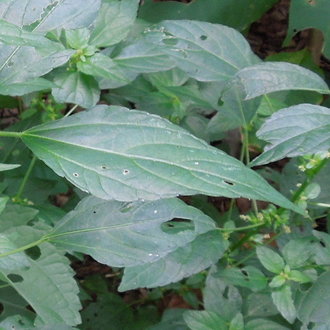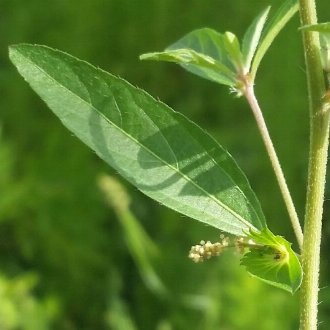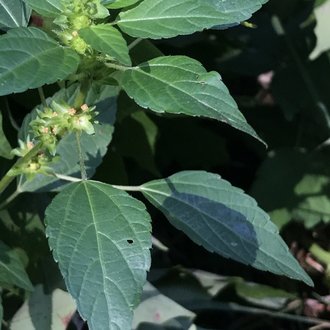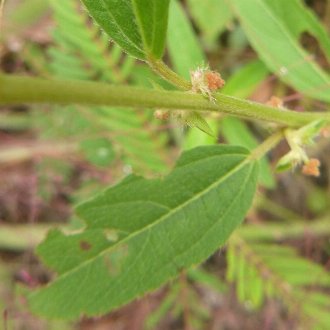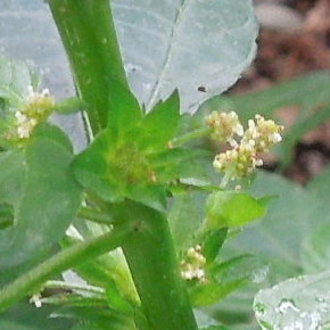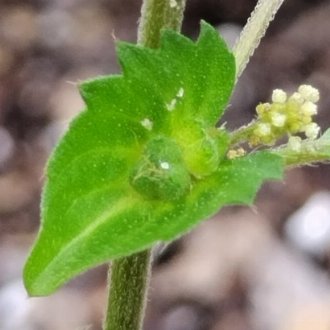Rhomboid Mercury vs Slender Threeseed Mercury
This guide is under construction and has not been published yet. It may have errors. When in doubt, double-check other sources for definitive ID.These species are usually relatively easy to tell apart; typically the related Virginia threeseed mercury (Acalypha virginica) is more easily confused with both of these species. However, they can be hard to distinguish by people who rely too heavily on bracts, as the bracts of these two species have overlapping characteristics.
Rhomboid Mercury (Acalypha rhomboidea) | Slender Threeseed Mercury (Acalypha gracilens) |
A common annual native to eastern to central North America, found in a range of habitats that have been disturbed in late spring to early summer. | An annual native mostly to the southeastern US. |
Leaves average broader, and tend to have a rhomboid shape, with an angle closest to the leaf's widest point. Leaves tend to taper more strongly at the tip. Serrations more pronounced. Photo © , CC BY-SA 4.0. | Leaves average narrower, ovate in shape, tend to have blunter tips, and less pronounced serrations. Photo © Jay Horn, CC BY 4.0. |
Mature leaves lower down on the plant have longer petioles, typically more than 1/2 the length of the leaf blade. Photo © Summit Metro Parks, CC BY 4.0. | Mature leaves lower down on the plant have shorter petioles, typically at most 1/4 the length of the leaf blade. Photo © Christopher Warneke, Public Domain. |
Bracts usually have 7-9 lobes, rarely as few as 5 or as many as 11. Bract lobes are more deeply-cut, 1/3–2/3 the length of the bract. Photo © , CC BY-SA 4.0. | Bracts usually have 9–13 lobes, rarely as few as 7 or as many as 15. Bract cuts are shallow, 1/10–1/4 the length of the bract. Photo © Abby Darrah, CC BY 4.0. |
References & External Resources
These short lists show only links helpful for ID. For a complete list of references and resources also covering other aspects of ecology, visit the links section of the full article on each plant, which is the first entry here.



